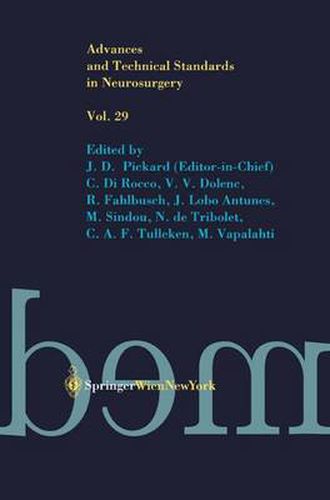Readings Newsletter
Become a Readings Member to make your shopping experience even easier.
Sign in or sign up for free!
You’re not far away from qualifying for FREE standard shipping within Australia
You’ve qualified for FREE standard shipping within Australia
The cart is loading…






This title is printed to order. This book may have been self-published. If so, we cannot guarantee the quality of the content. In the main most books will have gone through the editing process however some may not. We therefore suggest that you be aware of this before ordering this book. If in doubt check either the author or publisher’s details as we are unable to accept any returns unless they are faulty. Please contact us if you have any questions.
Epilepsy surgery is defined as any neurosurgical intervention whose pri- mary objective is to relieve medically intractable epilepsy (European Fed- eration of Neurological Societies Task Force 2000). The aim of epilepsy surgery is to reduce the number and intensity of seizures, minimise neuro- logical morbidity and antiepileptic drug (AED) toxicity, and improve quality of life. By definition, epilepsy surgery does not include normal surgical treatment of intracranial lesions where the primary goal is to di- agnose and possibly remove the pathological target, often an advancing tumour. In these patients, epileptic seizures are only one symptom of the lesion and will be treated concomitantly as part of the procedure. Temporal lobe epilepsy (TLE) is recognised as the most common type of refractory, focal epilepsy. In one third of all cases the neuronal systems responsible for the seizures that characterise this form of epilepsy fail to respond to currently available AEDs (Andermann F 2002). New imaging methods, especially magnetic resonance imaging (MRI), identify localising abnormalities in an increasing proportion of patients with intractable focal epilepsy. Consequently, the accuracy of the preoperative diagnostic pro- cedures has been significantly improved during the last decade; and suit- able candidates for surgery can be selected more reliably. Currently the main resources in most epilepsy surgery centres have been used to evaluate candidates for TLE surgery.
$9.00 standard shipping within Australia
FREE standard shipping within Australia for orders over $100.00
Express & International shipping calculated at checkout
This title is printed to order. This book may have been self-published. If so, we cannot guarantee the quality of the content. In the main most books will have gone through the editing process however some may not. We therefore suggest that you be aware of this before ordering this book. If in doubt check either the author or publisher’s details as we are unable to accept any returns unless they are faulty. Please contact us if you have any questions.
Epilepsy surgery is defined as any neurosurgical intervention whose pri- mary objective is to relieve medically intractable epilepsy (European Fed- eration of Neurological Societies Task Force 2000). The aim of epilepsy surgery is to reduce the number and intensity of seizures, minimise neuro- logical morbidity and antiepileptic drug (AED) toxicity, and improve quality of life. By definition, epilepsy surgery does not include normal surgical treatment of intracranial lesions where the primary goal is to di- agnose and possibly remove the pathological target, often an advancing tumour. In these patients, epileptic seizures are only one symptom of the lesion and will be treated concomitantly as part of the procedure. Temporal lobe epilepsy (TLE) is recognised as the most common type of refractory, focal epilepsy. In one third of all cases the neuronal systems responsible for the seizures that characterise this form of epilepsy fail to respond to currently available AEDs (Andermann F 2002). New imaging methods, especially magnetic resonance imaging (MRI), identify localising abnormalities in an increasing proportion of patients with intractable focal epilepsy. Consequently, the accuracy of the preoperative diagnostic pro- cedures has been significantly improved during the last decade; and suit- able candidates for surgery can be selected more reliably. Currently the main resources in most epilepsy surgery centres have been used to evaluate candidates for TLE surgery.